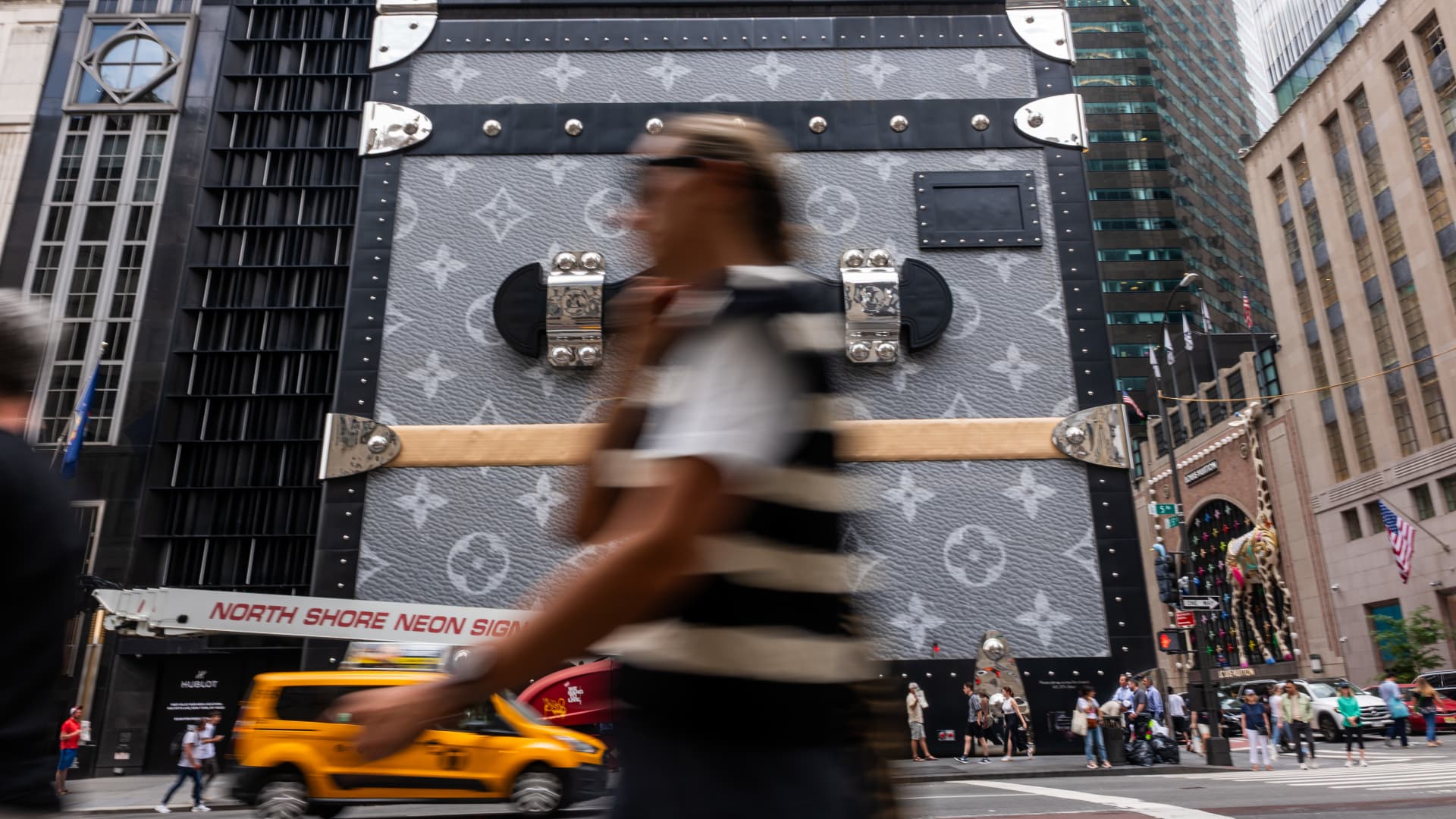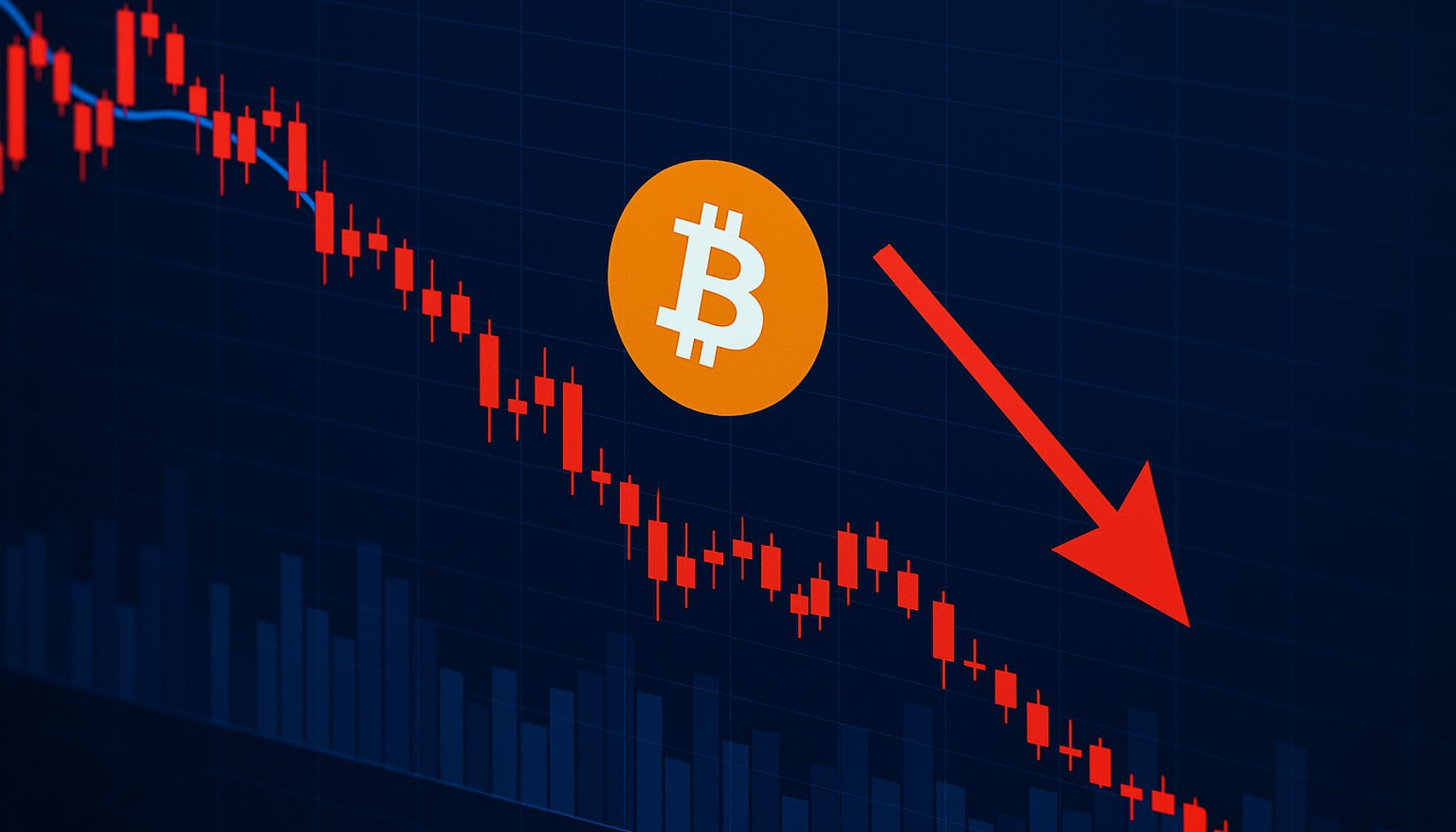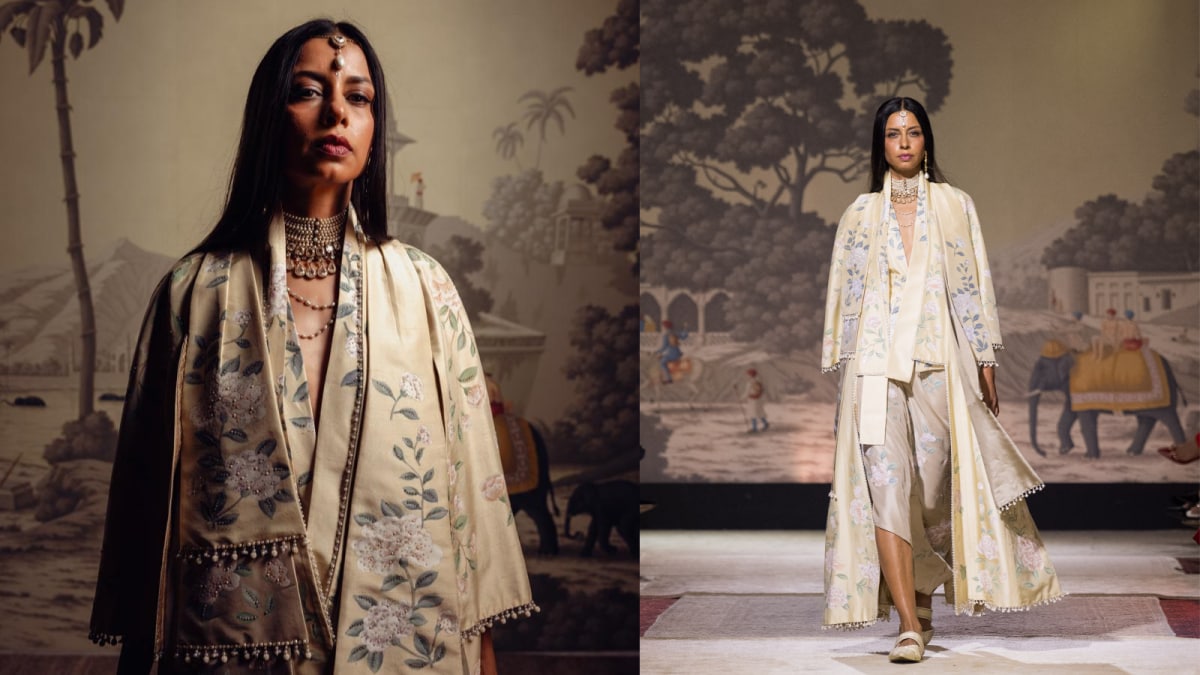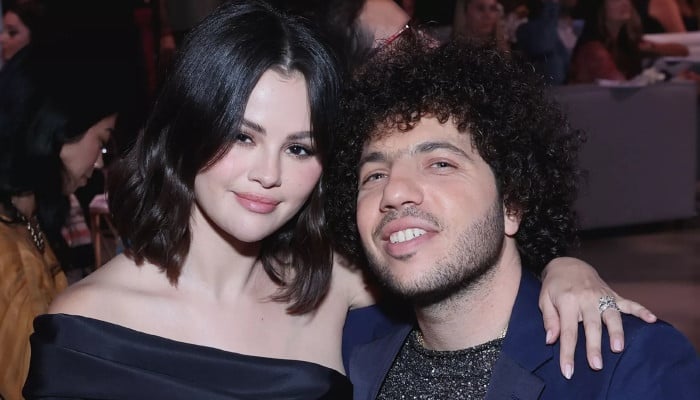Luxury shopper recovery faces four key headwinds

The 19-story façade of the Louis Vuitton luxury store stands wrapped in a design reminiscent of their monogrammed trunks in Manhattan, New York City.
Spencer Platt | Getty Images News | Getty Images
High-end spenders are painting a mixed picture when it comes to the luxury market’s long-awaited recovery, with softer sales still weighing on company forecasts.
But better-than-feared results from bellwether fashion house LVMH moved luxury stocks higher Friday, as investors bet on the emergence of green shoots of recovery.
LVMH posted a 4% year-on-year drop in second quarter sales to 19.5 billion euros after the market close Thursday, slightly below a consensus forecast for a 3% decline.
“This was not a stellar quarter for LVMH,” Deutsche Bank’s Adam Cochrane, a luxury equity research analyst, wrote in a Friday note. “However, we see some glimmers of hope with a sequential improvement in cFX [constant currency] sales expected from 3Q onwards and most of the sales weakness related to weaker tourism.”
Here’s a look at four key trends to look out for as earnings season rolls on, with fresh numbers due next week from Kering, Hermes and Prada.
Richemont saw sales in Japan drop 15% year-on-year in the three months to June, following a 59% jump over the same period the year prior. Burberry also cited a “challenging performance” in Japan in the second quarter, and Moncler said Japan was its only negative-performing Asia market — both without providing specific figures.
Some firms noted, however, that a downturn in tourism to Japan — and to a lesser extent Europe — has resulted in an uptick in domestic spending in certain other markets.
“[In China] we have seen tangible improvement locally,” said LVMH’s Chief Financial Officer Cécile Cabanis during an earnings call Thursday, citing a “repatriation from the big drop we’ve seen in tourism to Japan.”
Burberry, Richemont, Moncler and Brunello Cucinelli all reported increased sales in their American markets over the second quarter, while LVMH noted that American demand was “broadly unchanged.”
Still, the extent to which that uptick is driven by U.S. customers frontloading purchases ahead of the full onset of tariffs is not yet clear, according to the firms.
“To tell you that this was driven by an anticipation of buying links to the tariffs? Honestly, I cannot tell you,” Roberto Eggs, Moncler’s chief business strategy and global market officer, said on an earnings call Wednesday.
Luxury companies have also been honing in on the U.S. market in recent quarters in a bid to compensate for continued soft demand in the key Chinese market.
Burberry CEO Joshua Schulman said the company’s recent U.S. growth indicated the “diversity of the luxury consumer that exists in that market,” from elite, high-spenders to high-traffic mall shoppers.
price hikes of 3% to 4% in the U.S. while Moncler said it was implementing “mid-single-digit” percentage increases for the coming 12 months. Burberry, meanwhile, said it began adjusting prices last year as part of broader overhaul plans.

LVMH, on the other hand, said Thursday that prices rises would need to come with an “improvement in the product” or modest rebalancing around inflation.
However, the French luxury conglomerate then went on to cite price hikes among “several levers” at its disposal to counter the impact of tariffs.
It comes as the cost of luxury goods has risen by an average of 3% so far this year — the slowest pace since 2019 — according to UBS’ evidence lab, as brands have sought to reconcile consumer retention with higher input costs following a Covid-era surge in prices.
artistic director Demna Gvasalia and incoming CEO Luca de Meo.
“Bringing newness, something fresh which has not been seen before, is I think what could make Gucci great again,” Madjo said.




